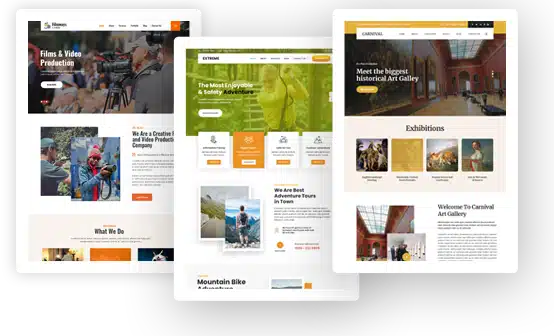Start Smart, Stay Protected: 6 Legal Must-Haves for Website Designers and Theme Developers

When I started my business, I did everything myself. From designing websites to writing my own contracts and even trying to tackle the world of corporate tax.
Like many freelance designers and developers, I thought I could figure things out as I went. But pretty quickly, I found myself overwhelmed with taxation requirements, company filings, freelancer disputes, and wondering what would happen if a client didn’t pay.
Hint: it’s not good.
It wasn’t just overwhelming. It was risky. One wrong move, and I could’ve been hit with financial penalties, legal disputes, or worse.
That’s when I realised legal protection isn’t just for large agencies. It’s for anyone building websites, selling themes, or offering digital services. Freelancers included.
Putting the right legal documents in place changed everything. It gave me structure, reduced my stress, and freed up my energy to focus on growth, knowing my business had a safety net.
Here are six essential legal documents I believe every designer or developer should have from the start…
1. Business Structure Agreement
Whether you’re freelancing or building a design studio with a partner, having a clear agreement on roles, ownership, and responsibilities is essential.
Without a clear business structure agreement, for instance, it becomes difficult to manage expectations around ownership, decision-making, and profit distribution. This can cause serious issues down the track, especially if you’re in business with a partner or planning for growth.
To get a solid business structure agreement, I suggest enlisting the help of a great small business lawyer.
2. Terms and Conditions
T&Cs clearly outline how you do business. They protect you from late payments, scope creep, and liability issues. I learned this the hard way during a payment dispute that dragged on for months. If I had a strong contract in place, the issue would have been resolved in days.
T&Cs are more than ‘fine print’.
They set the ground rules for how you get paid, what happens if there’s a dispute, and where your responsibilities start and end.
Without them, you’re more vulnerable to late payments or clients disputing deliverables, and it becomes harder to enforce your rights. Consider investing in contract review software like LegalOn or similar legal services to ensure your T&Cs cover all essential elements for your specific business needs.
3. Employment Agreements
If you hire a developer, designer, or VA, make sure it’s backed by a proper contract. These agreements protect your IP, define confidentiality, and set clear expectations around deliverables.
Even with casual or part-time help, having clear contracts protects both parties. It makes sure that confidentiality, intellectual property, and expectations are formally acknowledged, which becomes especially important as your team or workload grows.
4. Privacy Policy
Customers care about how you handle their data. And so does the law.
A compliant, transparent privacy policy helps build trust and keeps you on the right side of regulations, especially if you collect information online.
If you collect customer information, such as through a website, newsletter signup, or by invoicing, you need a privacy policy.
It’s especially important for designers who build and manage sites for clients. You’re often handling customer data or advising clients on legal pages. A privacy policy builds trust and keeps both you and your clients legally compliant.
I know that many website themes come with a standard privacy policy. However, as this is technically a legal document, it’s worth having a lawyer review it, even if it’s generic and published across all your themes.
It’s not just best practice, it’s a legal requirement in many jurisdictions.
Failing to have one can put you at risk of regulatory issues and damage your reputation if questions arise around how you handle data.
5. Commercial Lease Agreement
A lease is one of the biggest financial commitments you’ll make. Reviewing the fine print (ideally with the help of a legal expert) can help you avoid hidden costs, maintenance surprises, and restrictions that could hamper your operations.
Leases, too, are more complex than they appear. Commercial lease agreements can include clauses that expose you to unexpected costs or restrict how you operate your business.
Without a proper review, you might unknowingly agree to terms that are difficult or costly to uphold. Or your design business could get evicted without due notice.
This is definitely an important document to review if you run your business from a leased shop front.
6. Intellectual Property Protections
Your brand, your themes, your design assets…they’re all IP. And they’re worth protecting.
They are your most valuable assets. Registering your business name, logo, and any original content helps prevent copycats and gives you legal standing if someone tries to trade off your reputation.
Some common risks:
- A former contractor reuses your code or design files for their own projects
- Someone launches a business with a confusingly similar brand or website layout
- A competitor clones one of your theme demos and markets it as their own
Registering these assets ensures that you have a legal basis to prevent others from using or profiting from your brand. It may not seem like a huge deal when you’re first starting out, but it’s a layer of protection that can make a huge difference as your profile and market reach grow.
Start by registering your business name and domain. Then consider trademarking key elements of your brand, such as your logo, tagline, and product or service names.
Why It All Matters
Legal protections are for all businesses. Putting the right documents in place early helps you avoid costly mistakes and run your business with confidence. To make managing these documents easier and reduce manual errors, you can also use document processing automation to streamline compliance and record-keeping tasks.
Key takeaways
- Clear agreements prevent disputes and protect your income.
- Even small businesses need T&Cs, contracts, and IP protection.
- IP protection matters, especially if you’re creating original assets or themes.
- Early legal advice saves time, stress, and money later.
Marshall Thurlow Author
Marshall Thurlow is Director and Founder of Orion Marketing Pty Ltd. He is a digital marketer with expertise in SEO, website design, content marketing, and project management.

